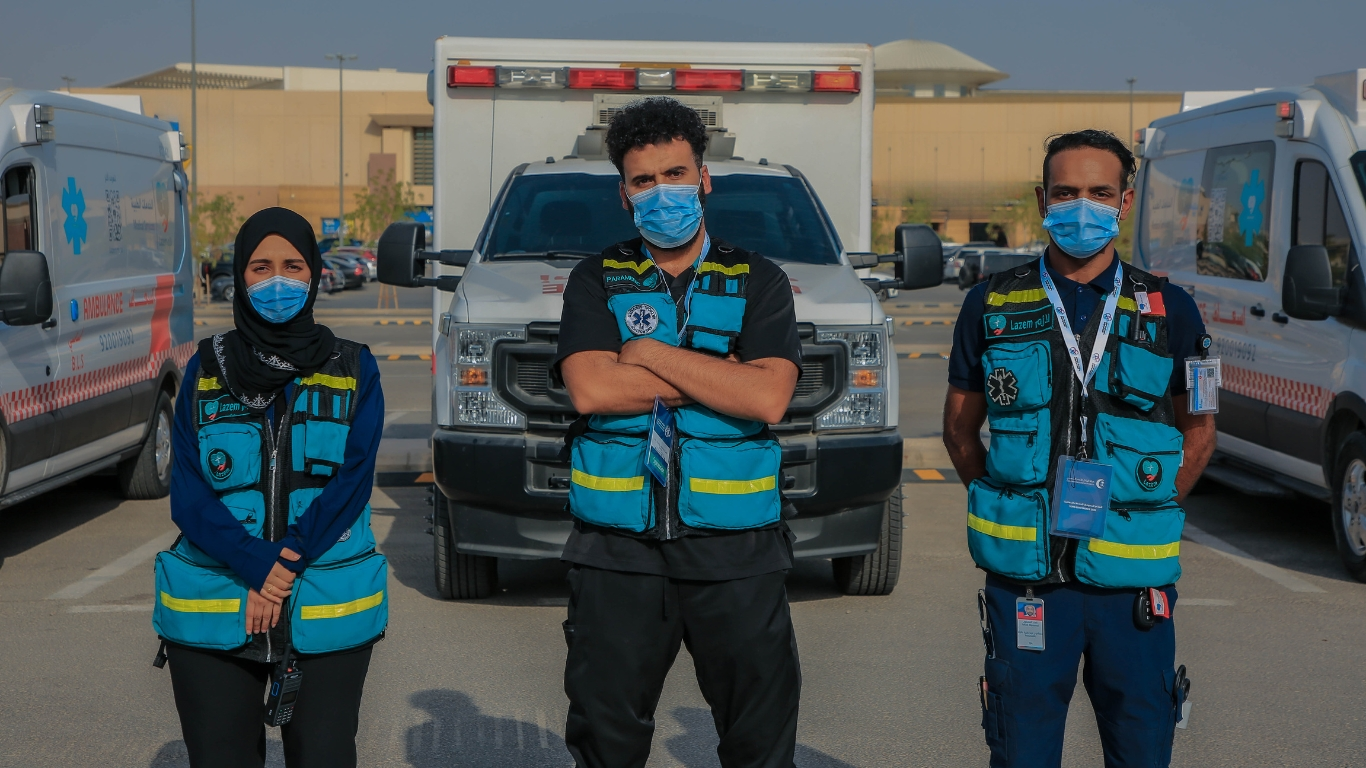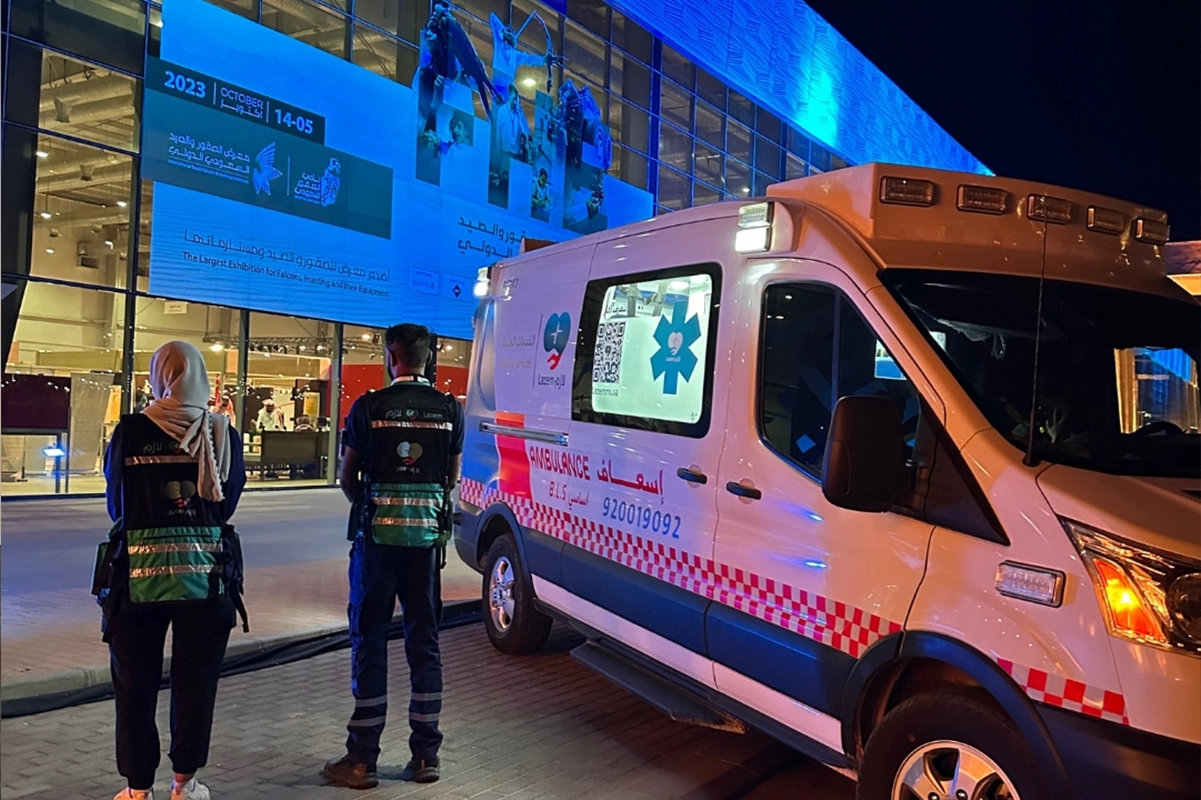
How to prepare for your event?
1- Risk assessment
Determine the type of event and medical preparations
Food events such as food festivals and weddings require attention to food allergies and the provision of food ingredient lists and warning signs. Medical teams must be provided to deal with emergency allergy cases, with safe food options provided.
Sports stadiums
Sports stadiums require medical preparations to deal with sports injuries such as fractures and sprains, with psychological support provided to the audience to reduce stress and emotional pressure during sporting events.
Entertainment events and festivals
Cultural and social events require medical preparations to deal with emergencies such as wounds and panic attacks, with immediate medical care provided to participants.
Dangerous events
Dangerous events such as falcon exhibitions require special preparations to deal with injuries resulting from interaction with birds of prey, with training employees on safety and providing the necessary medical care in emergency cases.
Identify potential risks: sports injuries, minor accidents, medical emergencies such as asthma attacks or allergies and prepare for sudden injuries.
Expected number of attendees: Estimate the number of participants and audience to determine the size of the required preparations.
Estimating the number of participants and audience is essential for effective event planning. This estimate helps in determining the required resources and allocating them correctly.
Number of attendees Steps to estimate the expected number of attendees
Collecting data and analysis:
Analysis of previous events.
Pre-registration and tickets sold
Evaluating the influencing factors:
Type of event, location, and timing.
Logistics preparations:
Determine the number of medical and security team members.
Prepare medical equipment and first aid points.
Risk assessment:
Prepare emergency plans and enhance safety procedures.
Using technology:
Registration applications and surveillance cameras.
Communicating with attendees:
Providing safety instructions and first aid locations.
2- Medical planning
Develop an emergency plan: Including the procedures to be followed in case of an emergency and how to coordinate with medical teams.
Determine the locations of first aid points: Distribute them in strategic places within the event to ensure rapid access.
Determine the necessary medical resources: Medical equipment, medications, and any other medical supplies.
Coordination with local health services: To ensure the provision of the necessary support in major emergencies.
3- Preparing medical teams
Assigning specialized medical teams: according to the type of event and potential risks (first aid teams, emergency teams, psychological support teams).
Training medical teams: to deal with various injuries and expected emergencies.
Providing the necessary first aid equipment: such as mobile medical bags, cardiopulmonary resuscitation devices, etc.
4- Communication and media
Placing directional signs: to guide participants to the locations of first aid points and emergency areas.
Providing emergency contact information: publishing phone numbers and direct lines of communication with medical teams.
Educating the public and employees: on how to act in emergencies and the locations of first aid points.
5- Implementing the event
Activating the emergency plan: and ensuring the readiness of all teams and equipment.
Monitoring the situation effectively: through the use of technology such as surveillance cameras and the broadcasting system.
Responding quickly to accidents: through equipped and trained emergency teams.
6- Post-event evaluation
Submitting accident reports: documenting all injuries and emergency cases that occurred and how to deal with them.
Reviewing the emergency plan: and identifying strengths and weaknesses to improve future preparations.
Performance analysis: Evaluating the effectiveness of medical preparations and planning any necessary improvements.
 English
English
 العربية
العربية
 中文語言
中文語言



Add New Comment